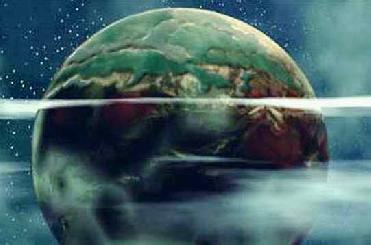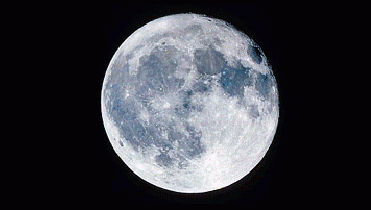
Artist's concept of Earth-like planet. NASA image
WASHINGTON (BNS): In recent times, astronomers have found many new planets beyond the Solar System, raising questions about the origins and properties of these alien worlds—not to mention the possible presence of life.
Speaking at a symposium titled “The Origin and Evolution of Planets” held at the annual meeting of the American Association for the Advancement of Science, in the Hyatt Regency, Chicago, on Saturday last, Alan Boss of Carnegie's Department of Terrestrial Magnetism said that one already knew enough to say that the Universe was probably loaded with terrestrial planets similar to Earth.
“We should expect that there are going to be many planets which are habitable, so probably some are going to be inhabited as well,” he said.
“There are something like a few dozen solar-type stars within something like 30 light years of the sun, and I would think that a good number of those -- perhaps half of them have Earth-like planets,” Boss said.
“So I think there is a very good chance that we will find some Earth-like planets within 10, 20 or 30 light years of the Sun,” the astrophysicist said.
The Carnegie scientist is hopeful that NASA's Kepler spacecraft, scheduled for launch in early March and dedicated to searching for Earthlike planets, will put his ideas to test.
Meanwhile, Russell Hemley, director of Carnegie's Geophysical Laboratory, said that understanding how the chemical building blocks of planets, such as hydrogen, oxygen, silicon, iron, and other crucial elements such as carbon, respond to conditions in the deep interior of planets, where pressures can exceed those on the surface by factors of millions, is key to understanding how planets might form and evolve.
“High-pressure studies can also offer clues to the search for life on planets different from our own. Our work is uncovering not only exciting new physics and chemistry, but also new findings in biology that are relevant to the prospects for life in whatever form beyond the Earth,” Hemley said. He went on to add that experiments are showing that there is viability of life as we know it now under surprisingly extreme conditions.
Astronomers described three important developments at a symposium on the ‘Cosmic Cradle of Life’ in the Chicago seminar. In one development, a team of astro-chemists released a major new resource for seeking complex interstellar molecules that are the precursors to life. The chemical data released by Anthony Remijan of the National Radio Astronomy Observatory (NRAO) and his university colleagues is part of the Prebiotic Interstellar Molecule Survey, or PRIMOS, a project studying a star-forming region near the center of the Milky Way Galaxy.
Scientists can search the GBT data for specific radio frequencies, called spectral lines -- telltale "fingerprints" -- naturally emitted by molecules in interstellar space.
“We've identified more than 720 spectral lines in this collection, and about 240 of those are from unknown molecules,” Remijan said.
The astrochemist said that they were making available to all scientists the best collection of data below 50 GHz ever produced for the study of interstellar chemistry.
Astronomers have already identified more than 150 molecules in interstellar space in the past 40 years, including complex organic compounds such as sugars and alcohols. “This is a major change in how we search for molecules in space. Before, people decided beforehand which molecules they were looking for, and then searched in a very narrow band of radio frequencies emitted by those molecules. In this GBT survey, we've observed a wide range of frequencies, collected the data and immediately made it publicly available. Scientists anywhere can 'mine' this resource to find new molecules,” Remijan explained.
 Previous Article
Previous Article













The Indian Air Force, in its flight trials evaluation report submitted before the Defence Ministry l..
view articleAn insight into the Medium Multi-Role Combat Aircraft competition...
view articleSky enthusiasts can now spot the International Space Station (ISS) commanded by Indian-American astr..
view article